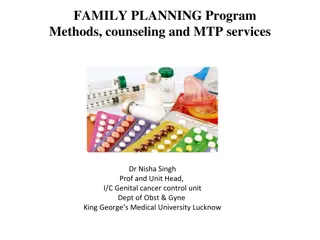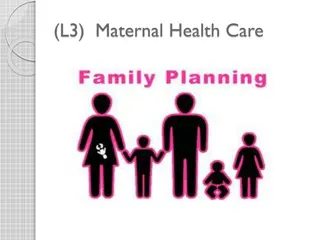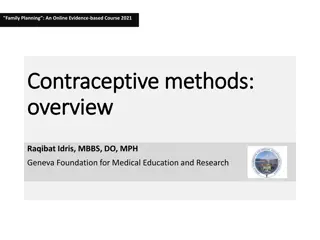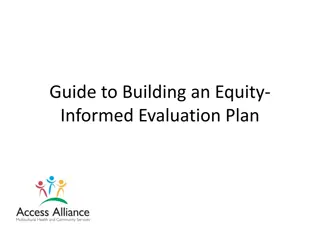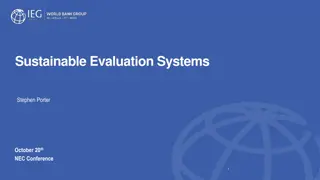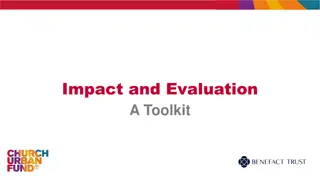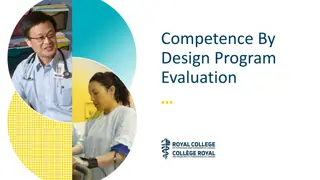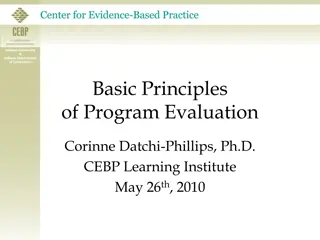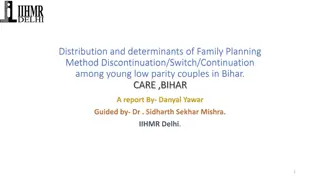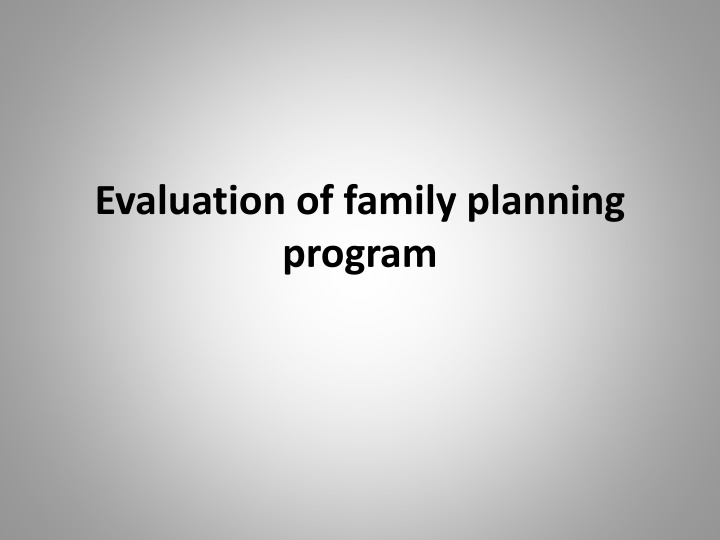
Family Planning Program Evaluation and Success Factors
Explore the importance of evaluating family planning programs, understanding unmet needs, and identifying factors affecting access. Learn about the key elements of success in family planning programs, types of evaluation, and how to measure impact and outcomes for effective decision-making.
Download Presentation

Please find below an Image/Link to download the presentation.
The content on the website is provided AS IS for your information and personal use only. It may not be sold, licensed, or shared on other websites without obtaining consent from the author. If you encounter any issues during the download, it is possible that the publisher has removed the file from their server.
You are allowed to download the files provided on this website for personal or commercial use, subject to the condition that they are used lawfully. All files are the property of their respective owners.
The content on the website is provided AS IS for your information and personal use only. It may not be sold, licensed, or shared on other websites without obtaining consent from the author.
E N D
Presentation Transcript
Evaluation of family planning program
objectives By the end of session, students will be able to: Explain purpose of evaluation. Discuss types of evaluation. Define unmet need for family planning. Discuss reasons for unmet needs for FP. Identify factors affecting unmet needs for FP. Recognize how to overcome unmet needs for FP.
Introduction The purpose of family planning program evaluation is to gain knowledge about family planning activities, effectiveness and efficiency. This provides information needed for decision making to modify the program in order to improve efficiency and utilization of services. and to judge their
Elements of success in family planning program 1. Make service accessible through various delivery points. 2. Make service affordable through partnerships between public and private sectors. 3. Offer client centered care to meet their needs. 4. Update service delivery guidelines, tools and job aids. 5. Communicate effectively according to local norms to motivate clients. 6. Assure contraceptive security through strong logistic system.
Cont. 7. Supportive policy showing that family planning contributes to development goals. 8. Coordination between different service providing agencies (partners). 9. High performing staff: motivation, good working environment. 10. Secure adequate budget: doing more with less. 11. Research, monitoring and evaluation to provide information for good decision making. 12. Strong leadership and good management. 13. integrating services when appropriate and refwerral where it is not.
Types of evaluation Evaluation of the need: To find out if there is a great need for FPP (e.g. population explosion and its economic and health impacts). Evaluation of the plan: To know if the plan is feasible (practical) and adequate (sufficient) to meet the need. Evaluation of performance: It is concerned with the production of expected good services (e.g. education sessions, distribution, clinic services, etc). contraceptive
Cont. 4-Evaluation of the impact: It determines whether the programme knowledge, attitudes, and behaviors of the population using different indices such as acceptance rate, continuation rates, and contraceptive prevalence rate. 5-Evaluation of the outcome: It is concerned with the changes related to crude birth rate (CBR) and total fertility rate (TFR) has changed
Unmet needs of family planning Definition: (KAP- gap) Percentage of women of reproductive age who are married, fecund and sexually active but are not using any method of contraception, and report not wanting any more children or wanting to delay the birth of their next child .
Situation and trends Despite the increases in contraceptive use, there remain significant gaps between women's desire to delay or avoid having children and contraception (unmet need for family planning). WHO African Region, unmet need was over 24% in 2009. This means that in this region, one in every four women who is married has an unmet need for FP. Unmet need was just under 13% in South-East Asia. Under 4% in the WHO Western Pacific Region. For adolescent women (aged 15 19 y) unmet need was around 25% in both the African and South-East Asia. For Eastern Mediterranean region, 15% of adolescent women had an unmet need for family planning. their actual use of
Global unmet need for contraception An developing countries would like to delay or stop childbearing but are not using any method of contraception. estimated 200 million couples in
Factors affecting unmet needs for family planning 1. Age: In India (NFHS 3), unmet need is highest below age 20 years and entirely for spacing not limiting births. Above age 30 years, unmet need is mostly for limiting births. 2. Socio-economic: unmet need is higher in rural areas, varies with education, religion, wealth index.
Reasons for unmet needs for FP 1-limited choice of methods 2-limited access to contraception, particularly among young people, poorer segments of populations, or unmarried people 3-fear or experience of side-effects 4-cultural or religious opposition 5-poor quality of available services 6-gender-based barriers. 7- lack of information.
How to overcome unmet needs? (i) Raise awareness at policy and political level on the benefit of family planning. (ii) Develop or review family planning policies. (iii) Improve the planning and other reproductive health services. (iv) Foster integration of family planning into reproductive health. quality of family
Thank you Best wishes


